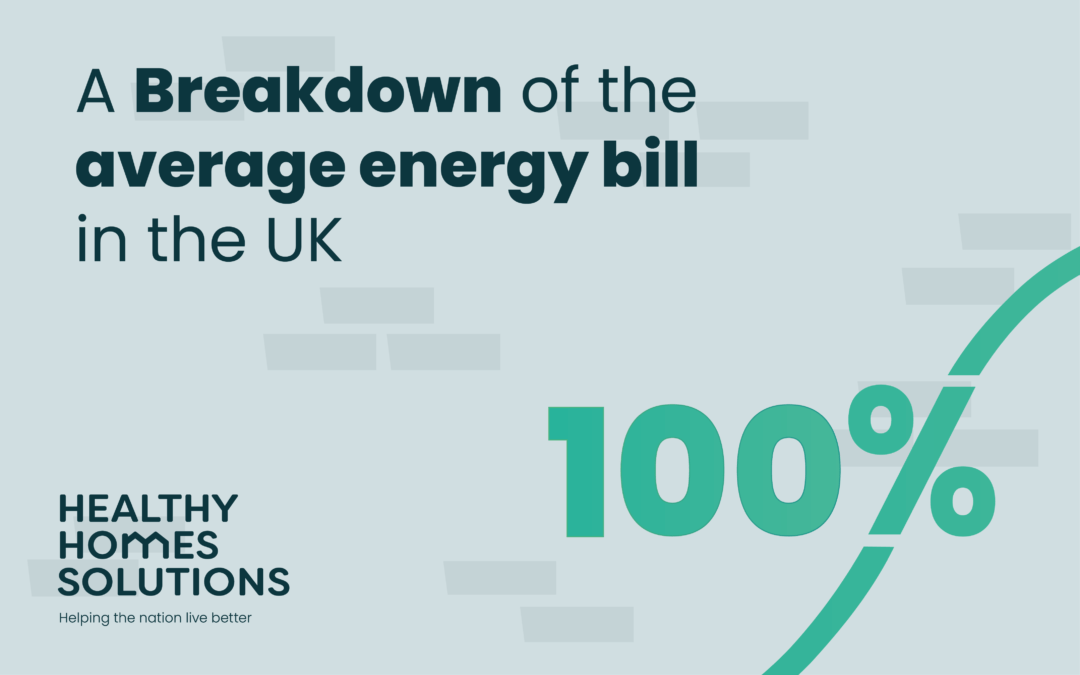After the energy price cap increased by a record 54% in April, homeowners in the UK are now paying up to £2000 a year on their energy bill, which has been a serious struggle for millions of homes and has brought many into a state of fuel poverty. However, this will unfortunately not be the end of it, as the price caps are set to increase further again in October, with energy costs expected to reach up to £3500 a year.
It is important that homeowners know why they are paying these amounts and what exactly they are paying for, yet many people are unaware of the specific elements that constitute their monthly bill.
What elements are included in the bill?
According to Ofgem, the national energy regulators, there are 6 main elements that constitute each energy bill.
- Wholesale costs 50%
- Network costs 25%
- Social and environmental obligations 15%
- Other direct costs 3%
- Supplier operating costs and margin 2%
- Taxes 5%
What are the details of these costs?
Though some people may already be aware that these elements are what account for their energy bill, they may not know the details of these costs or how they are calculated.
Wholesale costs
Energy supplied to power your home makes up your wholesale costs. This energy is bought by energy suppliers from the wholesale market. When supply is limited, energy costs increase, which in turn increases the costs for the consumers. Wholesale costs previously accounted for about a third of the average energy bill prior to the price cap increase, but prices are subject to changes based on supply and demand, meaning they now account for almost 50% of the average household energy bill.
Network costs
Network companies charge energy suppliers to make use of their energy network to deliver and obtain energy supply. These networks include gas pipelines and electricity cables. This cost goes towards maintaining, running, and upgrading the network and a portion of these costs gets passed down to the consumer, accounting for about 25% of the average household energy bill. Network costs can also include any additional costs incurred by customers that have transferred energy companies due to the collapse of the customer’s previous supplier. These additional costs can add upwards of £68 to their energy bill.
Social and environmental obligations
These costs cover government grants and policies that help improve energy efficiency for UK homes and efforts to increase renewable energy sources. Feed-in-tariff payments, which are payments made to those who have installed solar panels that send the extra power they produce into the national grid are also covered by these costs. In total these costs account for about 15% of the average household energy bill.
Other direct costs
Other costs include third-party services i.e. sales commissions and brokerage, meter maintenance and installations, administration from data and settlement services and wider smart metering programme costs. This accounts for an additional 3% of the bill.
Supplier operating costs and margin
Energy companies make a profit from the services they provide, so additional costs cover all the other general costs of running an energy company. This usually accounts for about 2% of the average household energy bill.
Taxes
VAT is included in the cost, equating to around 5% of the average household energy bill.
How can consumers reduce their energy bills?
The main elements homeowners can directly reduce is the wholesale cost and in-turn the tax. This is because the less energy they use, the lower this cost will accumulate (and the less the tax will be). The most effective way to accomplish this is for homeowners to make efforts to improve the efficiency of their energy usage at home. This can save money as well as helping reduce their carbon footprint.
